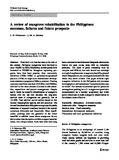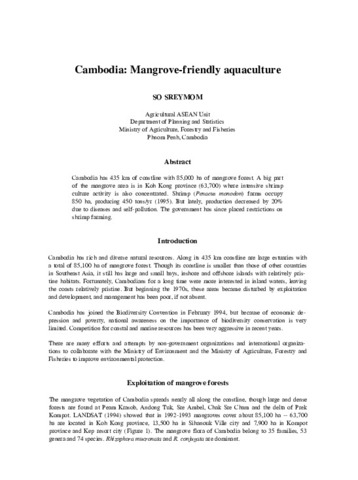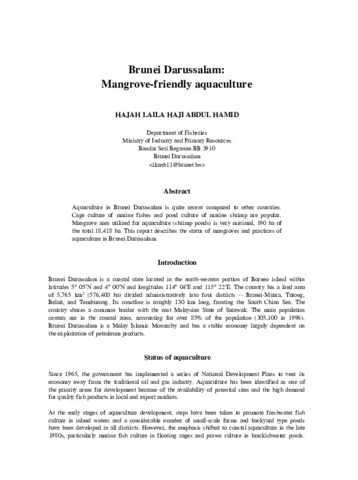Financial feasibility of green-water shrimp farming associated with mangrove compared to extensive shrimp culture in the Mahakam Delta, Indonesia
Share
Abstract
This paper presents a post-hoc assessment of the introduction of intensive shrimp farming strategies, with and without green-water (GW) technology, in the Mahakam Delta where extensive systems (ES) dominate. The study also assesses the potential of integrated mangrove GW shrimp production (MGW). The method section describes the systems considered, the cost-benefit analysis applied and the assumptions for different scenarios. The data for the GW and non-GW systems were based on a survey in the Philippines. Assessing cultured shrimp yields from the total farm area showed that production from non-GW was 10% higher than from GW farms. Compared to these two systems, the MGW system produces about 20% of the total shrimp, but provides complementary livelihood options and ecosystem services. Per unit area covered, MGW system produces 20 times more shrimp than ES, while income for farmers doubles and opportunities for livelihoods enhancement associated with the mangrove area increase. Low operating costs make the ES interesting for resource poor farmers, but risks to producers and societal cost are underrated. Transferring from ES to MGW system will increase the contribution to the national economy whilst maintaining ecosystem services, that would otherwise be lost, were intensive culture systems to predominate.
Description
Paper presented at the 9th Asian Fisheries and Aquaculture Forum April 21-25, 2011, Shanghai, China
Suggested Citation
Bosma, R. H., Tendencia, E., & Bunting, S. W. (2012). Financial feasibility of green-water shrimp farming associated with mangrove compared to extensive shrimp culture in the Mahakam Delta, Indonesia. Asian Fisheries Science , 25(3), 258-269. http://hdl.handle.net/10862/2170
Subject
Collections
- AQD Journal Articles [1215]
Related items
Showing items related by title, author, creator and subject.
-
A review of mangrove rehabilitation in the Philippines: successes, failures and future prospects
Primavera, Jurgenne; Esteban, J. M. A. (Springer, 2008)From half a million hectares at the turn of the century, Philippine mangroves have declined to only 120,000 ha while fish/shrimp culture ponds have increased to 232,000 ha. Mangrove replanting programs have thus been ... -
Cambodia: Mangrove-friendly aquaculture
Sreymom, So (Aquaculture Department, Southeast Asian Fisheries Development Center, 2000)Cambodia has 435 km of coastline with 85,000 ha of mangrove forest. A big part of the mangrove area is in Koh Kong province (63,700) where intensive shrimp culture activity is also concentrated. Shrimp (Penaeus monodon) ... -
Brunei Darussalam: Mangrove-friendly aquaculture
Hamid, Hajah Laila Haji Abdul (Aquaculture Department, Southeast Asian Fisheries Development Center, 2000)Aquaculture in Brunei Darussalam is quite recent compared to other countries. Cage culture of marine fishes and pond culture of marine shrimp are popular. Mangrove area utilized for aquaculture (shrimp ponds) is very ...





